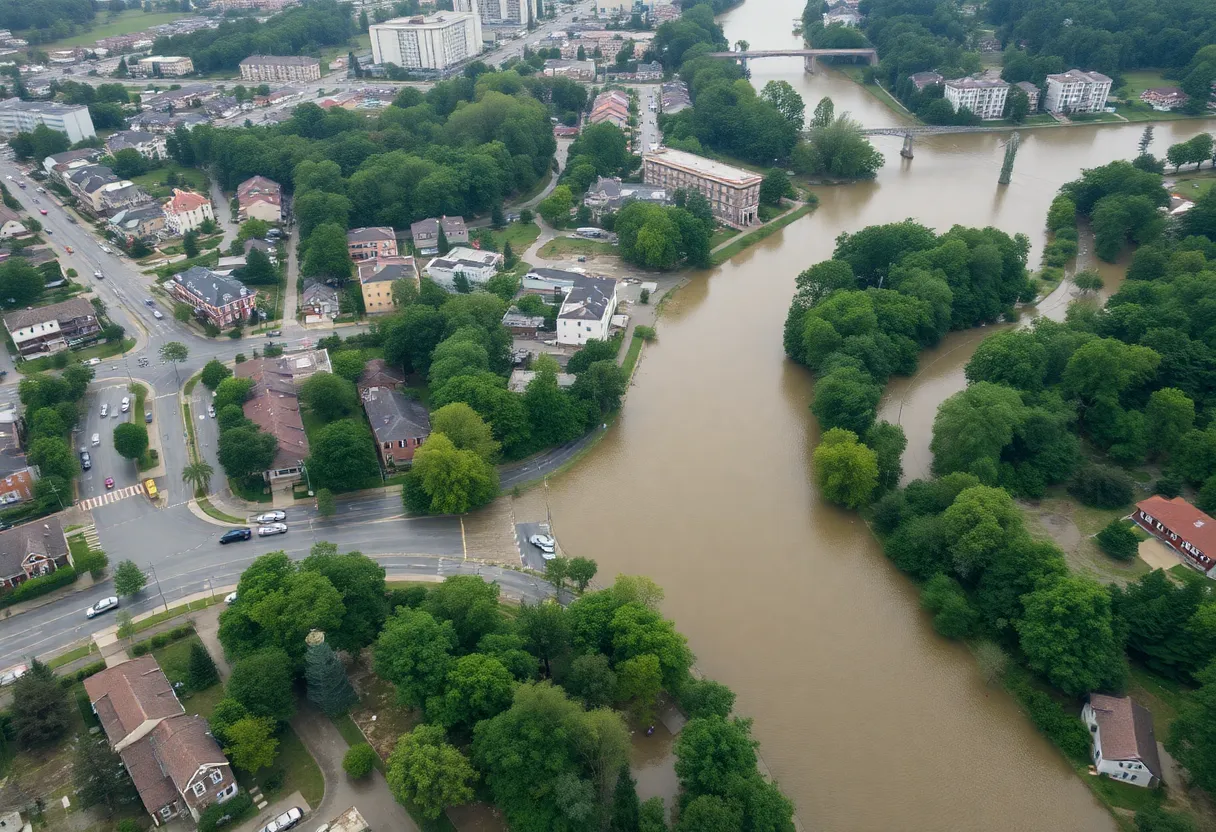News Summary
Asheville is reeling from the impacts of severe flooding caused by Hurricane Helene, which has led to extensive damage and challenges in disaster preparedness. Experts draw parallels to past catastrophic floods while highlighting the need for updated flood maps and effective building codes. The community’s resilience shines through as local businesses come together to aid those affected. However, permanent closures of some establishments raise concerns about the local economy’s recovery.
Asheville Faces Tough Times After Hurricane Helene’s Flooding
Asheville has once again found itself grappling with the aftermath of devastating flooding, a grim reminder of the natural disasters that have haunted the city for more than a century. The recent destruction caused by Hurricane Helene came just ten days after a thorough review of Asheville’s flood history, highlighting how little has changed when it comes to disaster preparedness.
Historic Comparisons: A Tale of Floods
Looking back, experts have drawn comparisons to the catastrophic floods of 1916, 2004, and 2021, which all reveal a troubling trend of ill-preparation in the face of nature’s fury. The weight of this recent disaster has been felt throughout Buncombe and Madison Counties, where approximately 3,000 buildings are at risk within 100-year flood plains. Unfortunately, the legacy of inadequacy extends to the outdated flood maps from 2010, which have not seen any updates, leaving many residents vulnerable.
Rain Sets New Records
The rains from Helene were so intense that many experts have deemed it a 1,000-year rain event. As it poured down relentlessly, it became evident that Asheville was in for trouble. The Swannanoa and French Broad Rivers set new flood records during this storm, outpacing even the historical markers from 1916. Preliminary estimates suggest the storm could rack up damages to the tune of $34 billion, making it one of the costliest cyclones in U.S. history.
Legislative Action and Community Resilience
In the wake of the disaster, North Carolina’s legislature swung into action, passing Senate Bill 382 to delay the rollout of updated building codes, citing operational reasons. However, this maneuver sheds light on a larger issue; key measures to mitigate flooding and storm damage have continually weakened in recent years, creating further concern for communities who face increased risks.
With climate change looming over the region, the discussions become even more critical. The increasing dangers of wildfires have become a point of worry, especially with Asheville’s landscape heavily packed with dry fuel and homes. Experts emphasize the necessity for homeowners to invest in “home hardening” strategies—upgrading roofs, siding, decks, and foundations to better withstand fire and flood damage. Yet, many residents find themselves in need of support to undertake these necessary improvements.
Community Comes Together
Despite the challenges, the spirit of Asheville’s community has shone through in the aftermath of the flooding. Local businesses and mutual aid groups have rallied to support those affected, showcasing the strength and resilience of the local population. Businesses like Bull and Beggar, owned by Drew Wallace, are on track to reopen by the end of January after facing severe flood damage.
Sadly, not all establishments were as fortunate. Popular spots like Bottle Riot and El Patio de Guajiro had to close their doors permanently due to the flooding’s overwhelming impact on their operations.
Looking Ahead: The Need for Change
The mounting pressure on local governments to address these persistent flooding problems has become undeniable. With the population of North Carolina having increased dramatically from just over 2 million in the early 1900s to nearly 11 million today, community resilience will depend on effective disaster preparedness strategies and cooperation from state lawmakers.
The people of Asheville are out there navigating the challenges, rescuing over 200 individuals from floodwaters alone. The community’s determination to rebuild and thrive remains a beacon of hope amidst the despair, ensuring that the story of Avalanche continues amidst the struggle.
Deeper Dive: News & Info About This Topic
HERE Resources
Asheville Community Confronts Allegations Against Local Academy
Asheville’s Community Unites for Recovery After Hurricane Helene
Asheville Recovers with Heartwarming Donations After Hurricane Helene
Asheville Faces Economic Challenges After Hurricane Helene
Asheville Police Department Innovates with Drone Technology
UNC Asheville Sees Enrollment Surge Amid Hurricane Struggles
Asheville Community Reacts to Allegations Against Local Academy
Asheville Prepares for Increased Homelessness After Hurricane Helene
Asheville Reopens Swannanoa River Road After Hurricane Helene
Asheville Residents Unite Against UNC Asheville’s Urban Forest Plans
Additional Resources
- The New York Times: Asheville Restaurants After Hurricane Helene
- ABC News: Flooding in Asheville, North Carolina
- USA Today: Opinion on Hurricane Helene and Climate Change
- Fox Weather: Helene Flooding in Asheville
- USA Today: Graphics on Hurricane Helene Flood
- Wikipedia: Flood
- Google Search: Hurricane Helene Asheville
- Google Scholar: Hurricane Helene Asheville
- Google News: Hurricane Helene Asheville







